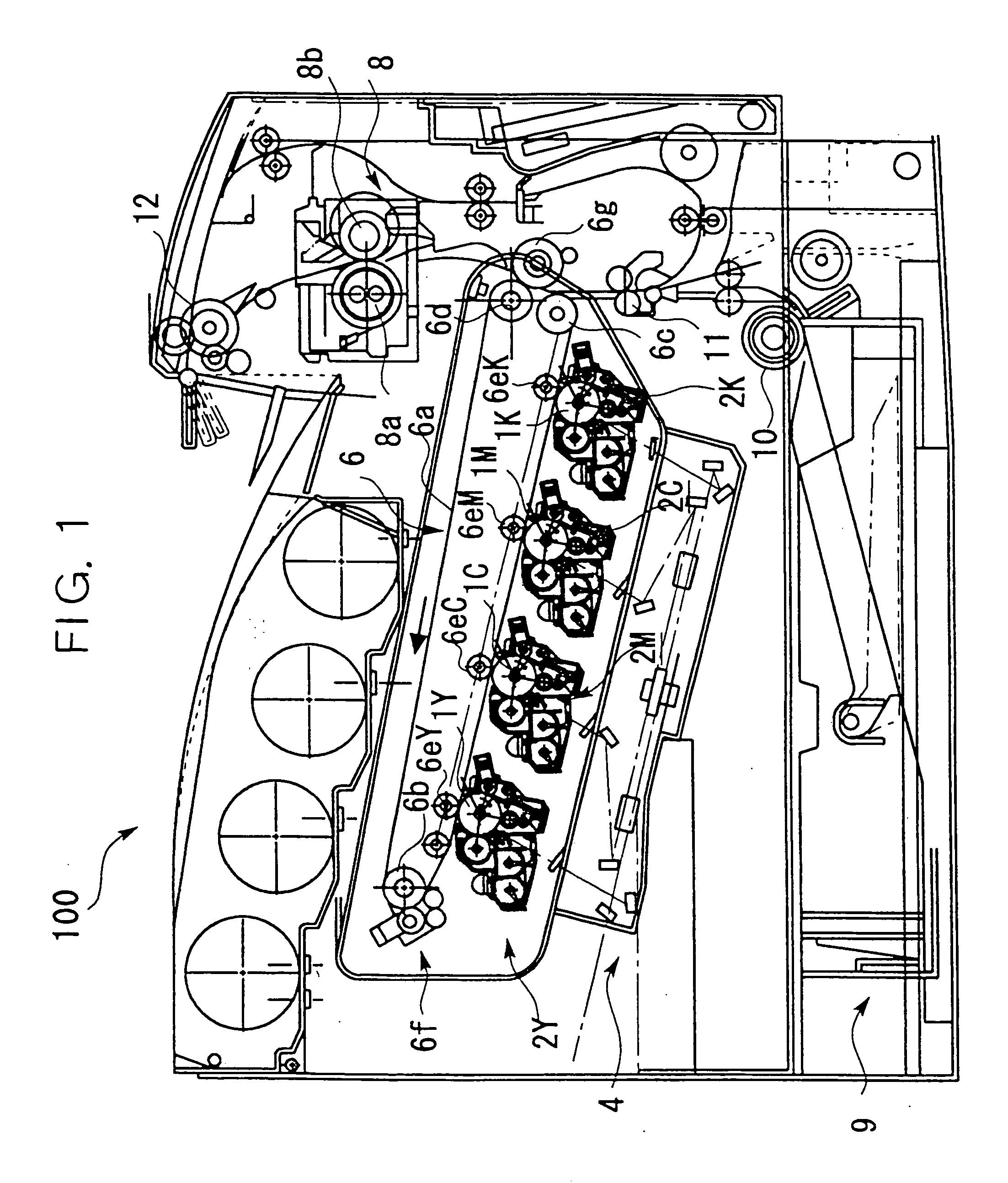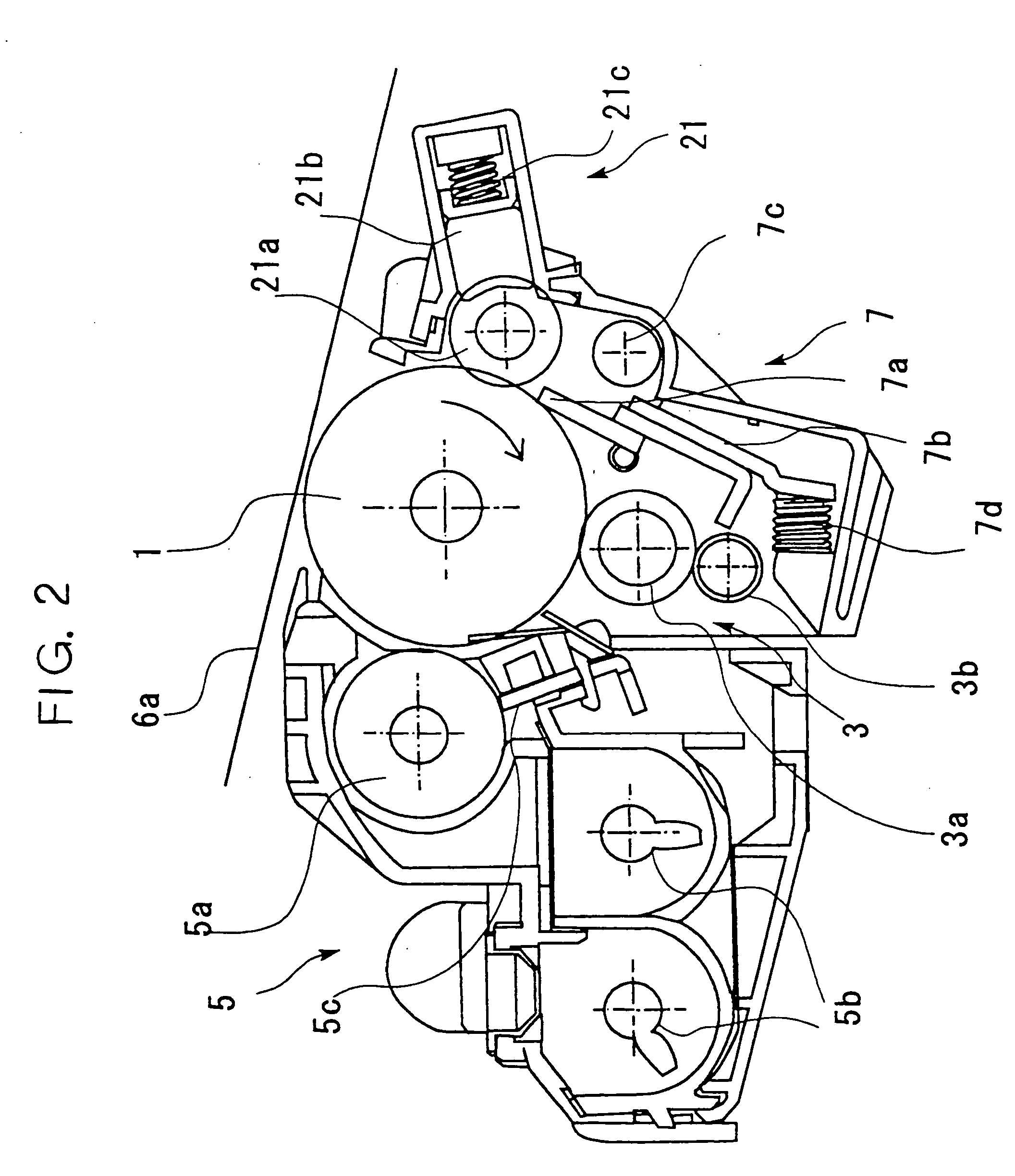Charging apparatus, and image forming apparatus equipped with same
a charging apparatus and image forming technology, applied in the direction of electrographic process apparatus, corona discharge, instruments, etc., can solve the problems of reducing charging performance, affecting the charging current, and fouling the surface of the photosensitive body, so as to prevent the effect of filming and filming defects, suppressing charging current fluctuations, and preventing filming defects
- Summary
- Abstract
- Description
- Claims
- Application Information
AI Technical Summary
Benefits of technology
Problems solved by technology
Method used
Image
Examples
first embodiment
[0039] This embodiment is primarily intended to achieve the above-mentioned first object of the present invention.
[0040] This embodiment will now be described in detail through reference to the drawings.
[0041]FIG. 1 illustrates the constitution of an image forming apparatus 100 pertaining to this embodiment. The description here will be for an example applied to the electrophotographic image forming apparatus 100.
[0042] This image forming apparatus 100 forms a color image from four colors of toner: yellow (hereinafter referred to as “Y”), cyan (hereinafter referred to as “C”), magenta (hereinafter referred to as “M”), and black (hereinafter referred to as “K”). The image forming apparatus 100 comprises four photosensitive bodies 1Y, 1C, 1M, and 1K serving as latent image carriers. The photosensitive bodies 1Y, 1C, 1M, and 1K are each rotated in the direction of the arrow in the drawing while in contact with an intermediate transfer belt 6a (surface movement member).
[0043]FIG. 2 ...
second embodiment
[0137] This embodiment is primarily intended to achieve the above-mentioned second object of the present invention.
[0138]FIGS. 1, 2, 3, 9A, 9B, and 10A to 10C referred to in the first embodiment above, and the descriptions of these drawings, all substantially apply to this embodiment as well, so these drawings will not be described again.
[0139] As discussed above, again in this embodiment, the charging roller 3a is connected to a power supply, and a specific voltage is applied thereto. This voltage consists of alternating current (AC) voltage superimposed over DC voltage. Applying AC voltage allows the surface of the photosensitive drum 1 to be charged more uniformly. As discussed above, however, if too much AC current flows, filming will occur on the photosensitive body surface, so the AC current level needs to be precisely controlled.
[0140]FIG. 11 illustrates the constitution of a power supply circuit and an AC current detection means of the charging apparatus pertaining to thi...
PUM
 Login to View More
Login to View More Abstract
Description
Claims
Application Information
 Login to View More
Login to View More - R&D
- Intellectual Property
- Life Sciences
- Materials
- Tech Scout
- Unparalleled Data Quality
- Higher Quality Content
- 60% Fewer Hallucinations
Browse by: Latest US Patents, China's latest patents, Technical Efficacy Thesaurus, Application Domain, Technology Topic, Popular Technical Reports.
© 2025 PatSnap. All rights reserved.Legal|Privacy policy|Modern Slavery Act Transparency Statement|Sitemap|About US| Contact US: help@patsnap.com



